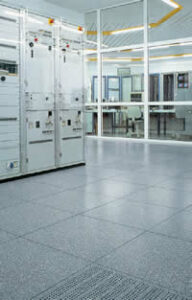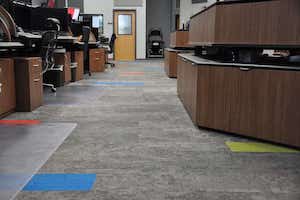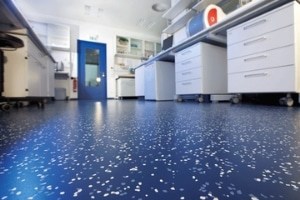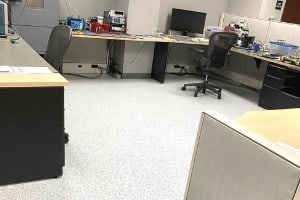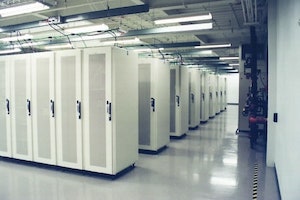
Data Center Flooring: ESD Floors Save Money & Reduce Energy Consumption
Data Centers use roughly three percent of all electricity generated on the planet.
According to the article “Improving Data Center Power Consumption and Energy Efficiency,” by Senior Vice President of Engineering and Chief Technology Officer, Ali Marashi – on a global scale, data center power consumption amounts to about 416 terawatts – or roughly three percent of all electricity generated on the planet.
That’s a lot of electricity.
It is estimated that 43% of the energy consumed by data centers is used for cooling and power provision systems. Data centers require cooling to offset heat generated by operational equipment. They also pump in humidity to offset static generation. Increasing humidity exacerbates energy inefficiencies, as more energy is required to cool humid air than dry air.
Controlling ESD in Data Centers
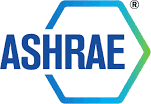
- ASHRAE is the American Society of Heating, Refrigerating and Air-Conditioning Engineers.
The research was completed by faculty and graduate students at Missouri University of Science and Technology who specialize in electrostatic discharge (ESD) phenomena. Results were published by ASHRAE and presented by Atieh Talebzadehghahroudi in her PhD dissertation: Characterization of Triboelectric Charging in Data Centers/Display Panel Manufacturers and EMI Visualization Based on Energy Parcels Method In High Speed Interconnections.
The study was dedicated to “the analysis of the electrostatic charge voltage levels along the following parameters: relative humidity, absolute humidity, footwear, flooring, and type of activity.” Researchers performed tests on all types of data center floor surfaces, with people wearing a variety of shoes and walking on the floors in both predefined and random patterns.
Reasons for the ASHRAE Study
Previous data center operating guidelines called for a very narrow range of temperature and humidity control, largely due to anecdotal evidence suggesting that moderate to high Rh lowers static electricity generation and accumulation. Controlling humidity results in a massive consumption of electricity to maintain what amounts to a narrow window of temperature and environmental moisture. The authors of the study believed that broadening or eliminating humidity controls could result in a major savings of electricity and money.
Findings
Researchers tested for electrostatic discharge at different temperatures and varied Rh levels:
Ms. Talebzadehghahroudi writes in her dissertation that: decreasing temperature at a fixed RH can increase static generation voltage. “Decreasing the RH at a fixed temperature also leads to an increase in event voltage.” She says further: “ESD shoes/floors will not only reduce the voltages strongly, but also lead to very rapid and controlled discharge times…”
D.E. Swenson, in his study, Flooring and Footwear: Charge Generation in Combination With A Person As Influenced By Environmental Moisture, notes: “… while moisture in the environment has an impact and effect on the charging process and resulting accumulation of voltage on a test subject, there is little merit in using environmental moisture (absolute and relative humidity) to control static electricity without a controlled flooring and footwear system.”
In other words, ESD flooring—also known as antistatic flooring and static-control flooring—and static-protective (ESD) footwear is better than humidity controls at protecting the powerful electronics inside a data center against static electricity.
What does all of this mean?
It means that inhibiting static in data centers requires an effective ESD-protective flooring-footwear system. Humidity alone – without ESD flooring and footwear – cannot adequately control static charges.
- The results also showed that charge does not only build up during walking: critical voltage levels can be reached simply by standing up from a non-ESD certified chair, or by removing and dropping a sweater.
- “The high voltages created by removing and dropping a sweater and by standing up from a chair indicate that these types of user activities might pose a higher risk of generating voltages greater than 6 kV much larger than the walking activities.” Atieh Talebzadehghahroudi
Improved Energy Efficiencies
ASHRAE’s current data center environmental specifications support what the energy efficiency community has advocated for years: following proper static-control protocols, data centers are tolerant to a wide range of temperature and humidity. With static-control protocols in place, ASHRAE allows even class A1 data centers, recommended for the tightest control, large swings in temperature and relative humidity.
According to ASHRAE’s committee 9.9 for mission-critical facilities, with an ESD mitigation system in place, a class A1 data center can range in temperature from 59°F to 89.6°F and in relative humidity from 20% to 80%.
This reduction in relative humidity saves energy at the humidifier as well as the cooling coil. And reducing the dewpoint of the space below the supply air temperature can eliminate the latent load at the cooling coils, saving significant energy in cooling as well as humidification.
ESD-control Protocols Cost Less Than Controlling Humidity
Due to the enormous energy savings,
installing an ESD floor also costs less than increasing relative humidity.
Using an ESD floor with static-control footwear, data centers can withstand
increased temperature and decreased Rh. By
following industry-standard data center facility design and operating practices
– which includes outfitting the data center with an ESD floor and mandating the
use of ESD-protective footwear – static charges have a very low probability of
harming IT hardware down to the lowest level tested: 8% RH.
Conclusions
By not vaporizing water for humidification, data centers in any climate can save energy. In cool climates, particularly those that use free cooling, data centers should no longer need to humidify at all for much of the year. Installing an ESD floor in data centers protects the powerful electronic equipment in data centers, saves money, and reduces energy consumption.
Further Reading and Sources
Get in Touch
The form below will help us better understand your needs and get you as quickly as possible to the right person. We look forward to helping you solve your static problem!
You can expect a response within 24 hours. For faster service, please give us a call: 617-923-2000
"*" indicates required fields
Visit our privacy policy to find out how we process data.

StaticWorx high-performance static-control floors protect electronic components, explosives, and high-speed computers from damage caused by static electricity. ESD flooring is part of a system. Choices should always be based on objective, researched evidence. When you partner with us, we look at all possible items that may need to integrate with the floor, and, focusing on your goals and objectives, help you find the right floor for your application.


